The History of Gion Matsuri
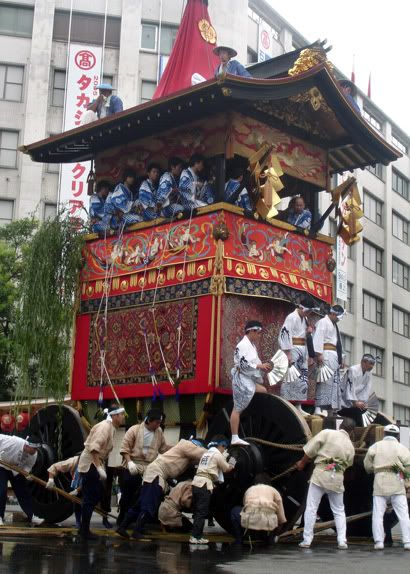
Gigantic floats gradually turn on smooth, green, bamboo logs, split in half and laid out on the rough cement. The crowds cheer with excitement and burst into applause every time the massive Yamahoko turn the corner with the thunder of creaking wheels.
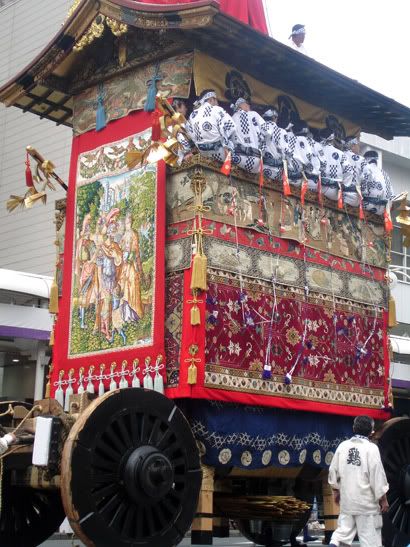
Gion Matsuri did not begin as the joyous celebration it is today. Its story beins in the year 869, as a deadly epidemic devastated the empire. The Shinto diety Gozu Tenno, also known as Gion, was known for his healing power and protection of its followers, as well as the power of transferability via sacred carriages. Seeing the plague as a punishment for impiety, Emperor Seiwa sent his messengers to Gion Shrine (now known as Yasaka,) to pray for relief, and ordered 66 floats to be erected, one for each province of Japan.
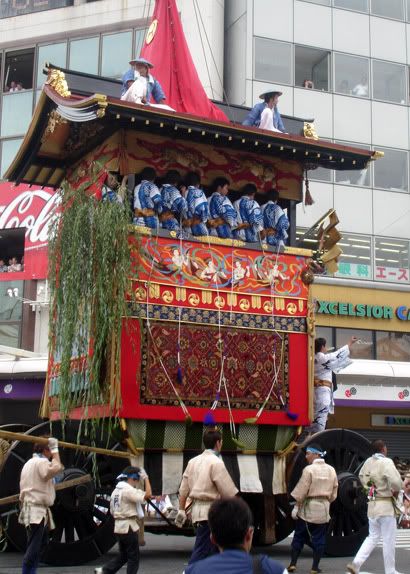
They were paraded thru the streets, purifying the city, until they arrived at Gion shrine (Yasaka), where prayer rituals were performed to expel the epidemic. Miraculously, the plague ended .
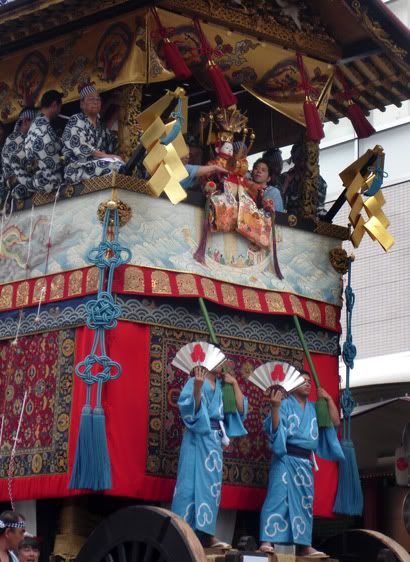
From that point on, whenever a plague broke out, the ritual was repeated. It did not become an annual event until 970, by which time the festival had become an integral part of the townspeople's lives, each year more elaborate than the first. When the Muromachi shogunate halted all religious events in 1533, the townspeople resisted strongly, declaring in true Japanese fashion that they could do without the rituals, but not the procession.

Gion Festival as we know it today began to take shape in the 1600's. By then it’s religious origins had been eclipsed by the prosperity of the people, becoming a a showcase of the wealth and splendor of Kyoto’s merchant class. As trade expanded beyond the land of the rising sun, imported tapestries from China, Korea, Persia, the Netherlands, and France, along with Nishijin tapestries, the finest in Japan, began to adorn the festival floats, giving the festival a unique international air.
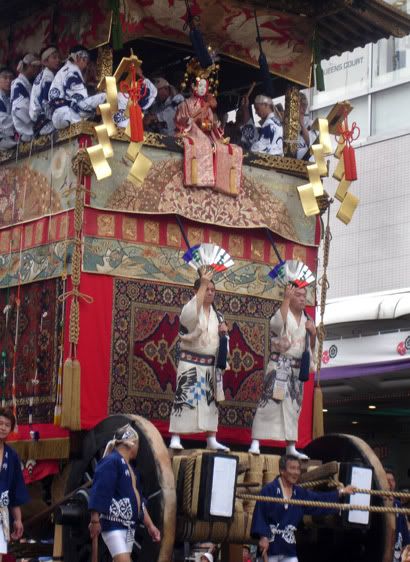
This year the parade fell on a Sunday for the first time in 11 years. The number of spectators reached about 240,000 according to the Kyoto Prefectural Police, tying with the record number of spectators recorded in 1989.
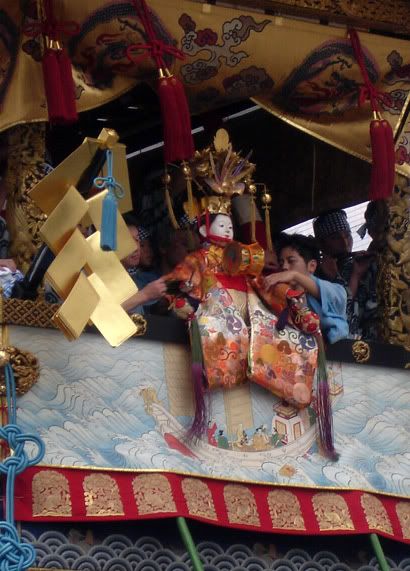
The Chigo, or sacred child, acts as an intermidary between the gods and the people. During the procession the Chigo is not allowed to touch the ground, and must be carried by other men. Traditionally, Chigo rode on all Gion Festival floats except the Fune-boko. However, towards the end of the Edo Period, this practice stopped, and children were gradually replaced by dolls. Nowadays, only the Naginata-boko keeps the tradition of having children ride aboard it.


Every community in Gion has its own float, owned by a wealthy merchant family, that has been passed down thru the centuries. The members of each community can be distinguished by their happi or yukatas, decorated with the community crest or kanji design.
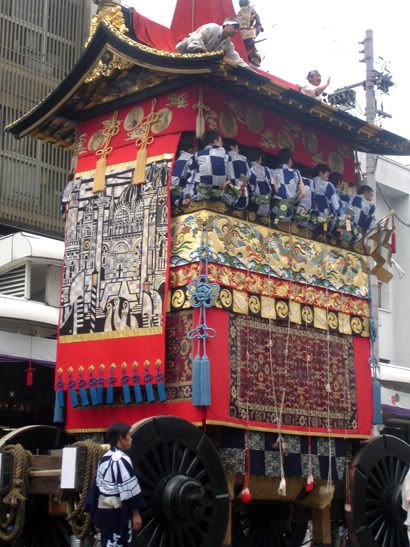
This is a hoko. Hoko weigh about 12,000 kg and stand at about 8 meters from ground to roof, not to mention the poles at the top, which reach about 25 meters. Before the parade, a crew of workers came down the street turning all street lights and signs off the road so as not to interfere with their procession. I was suprised as this floak creaked slowly past me to reveal an extremely modern looking (art deco style) tapestry decorated with a Christian Cathedral design, a cross at the heart of the composition.
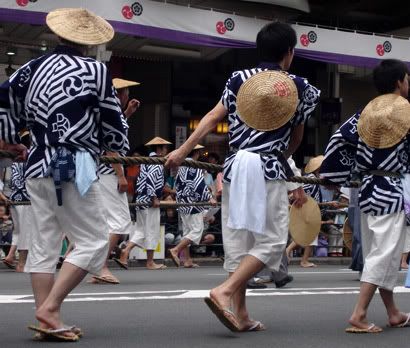
They are pulled by between 30 and 40 people with long ropes.


These guys try to keep the wheels spinning wihtout getting run over or losing any limbs. The carriages are still constructed in traditional sacred fashion,without nails. Everything is held together with elaborate roping techniques and interlocking wood.

Two pilots stand on a running board at the front of the float to guide it (four when turning,) and four roof lookouts keep the mast steady and clear of obstructions, such as power lines.

Check out the beautiful Castle design...not exactly tradtional Japanese! It must have been even more exciting for the internationally isolated people of Japan to see the imported tapestries of places and people so different from the one they knew.
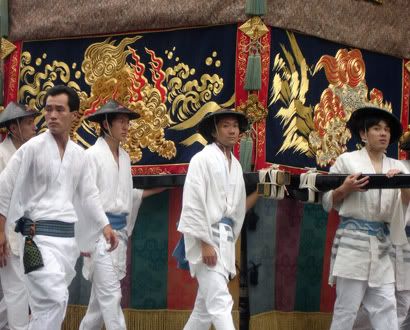
Yama floats are much smaller, and can be pushed, pulled or carried by 14-24 men.
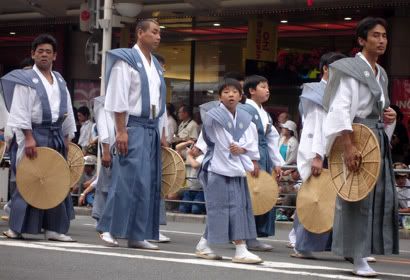
Participants in traditional hakama and straw hats.
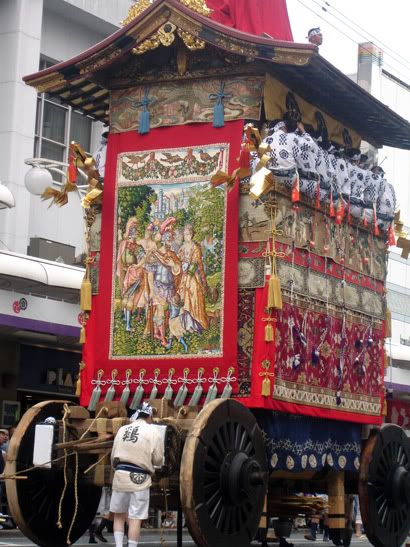

A medeval tapestry depicting the life of royalty and knights in shining armor.


Fune boko, "The Boat Float," is the most unique in the procession, led by a legendary pheonix, the golden Geki.

According to Japanese mythology, this float is based on an ancient ship used by the Japanese empress, Jingu Kogo, reputed have conquered three Korean kingdoms - Silla, Kokuryo and Pekeche, while pregnant with the future emperor. Japanese women still pray to Kogo Jingu for safe delivery. Because of her success in the war, she is also regarded as the Goddess of War.
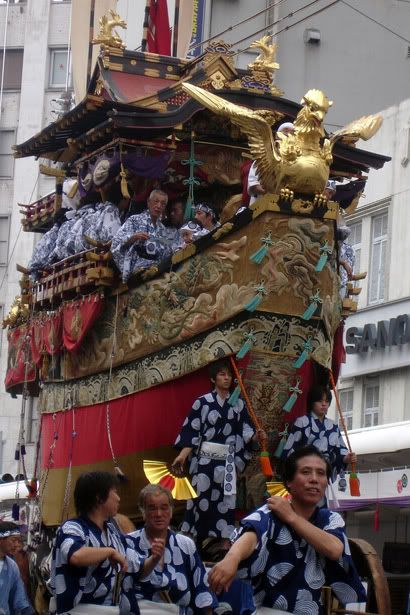

The main figures in this float are Empress Jingu Kogo and Ryujin - the Japanese dragon god of the sea (one of the figures shown in the picture). According to legend, Ryujin controls the tidal flow with hismagical Tide Jewels. Prior her invasion of Korea, Empress Jingu Kogo prayed to Ryujin, who granted her the magical Tide Jewels. The Japanese fleet set sail towards Korea, and the Korean fleet sailed out to confront them. When she saw the approaching fleet, the empress quickly threw the Low Tide Jewel into the sea so that the tide receded at once and the Korean fleet was beached. The Koreans all jumped out onto the mudflats, and at that moment the empress threw the High Tide Jewel in, and a tidal wave drowned the men and carried the japanese fleet to victory.
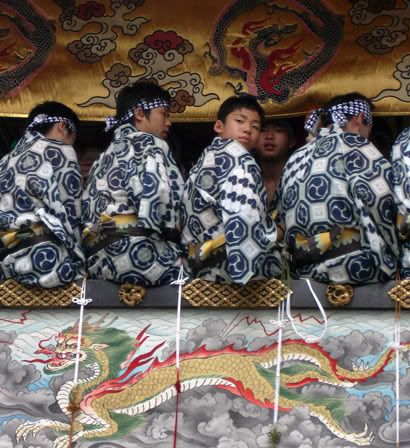

Young boys riding on the floats wear stylin' Yukata and play Gion Bayashi, tradtional festival music of flutes and bells.
Despite the fact that I left to secure a seat along the parade route over 2 hours before it began, thousands of people were already camped out at the corners of Shijo and Karasuma when I arrived. Luckily I found a spot just down from the corner sitting on the street, so I was still able to see the hoko make their death-defying turns. (I say 'I' because my fantastic travel buddy, JBlo, slept in and met me afterwards). Note to self: Next year be prepared to head for Karasuma at the crack of dawn! And get a decent camera, not to mention a cooler travel buddy! Nothin' but love Jblo! (^.^)/


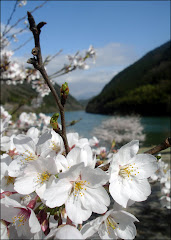

6 comments:
Well - I would like to hear more about this Jen girl that you went with to the Gion Matsuri! She sounds really beautiful and funny and wonderful and I bet she is! Melissa you are lucky to travel around with such a cool person! I know she feels the same as well! hmmm...these pictures are great! have you given them to your totally awesome friend JEN yet? No, you haven't...hmmmmmmmm...about that! Also, Jen is going to give you the money real soon - she completely forgot! She also thanks you for buying the stickers for her! She thinks that you are totally narley and tubular, DUDET!!! Yeah nice pics and cool captions - this is the BEST BLOG ON THE NET, YO!!!
Well Anonymous, I glad someone out there is ready to give J Blo the props she deserves! Represent! Especially since she is hard at work in Tokyo orienting the fresh JET generation, and totally unable to check this blog! I do feel quite honored to have shared this amazing experience with her, and grateful that she did not bust out her world famous samurai skillz on me after the infamous room-key losing incident.
Perhaps it is because her samurai sense told her she would need me to secure her precious stickers.
Anyways, Anonymous, I dont know you well,or at all, but please dont EVER say tubular or dudet again. EVER. Gosh golly! some people are just so un-cool...(^_^)/
ENJOY READING YOUR LINES OF WIT
THE PICS ARE SUPER.
WISH I HAD A JOB LIKE YOURS
MLU BYE
Everything in Japan is soooo much differant. I love how everything is so colorful and still so full of culture and tradition.i wanna come back!
Vicki...You better come back! we still need to dress up like Maiko and get our pix taken! You didnt even go to a festival, or sing Karaoke! You might as well not even have come! :) Come on! Im waiting...
Dear Melissa,
We are an educational publisher based in Singapore, and would like to get in touch with to obtain permission to reprint an excerpt from this blog post.
Hope you could reply with your email add so that we can provide further details.
Thanks & regards,
Nurul Hudha
Post a Comment